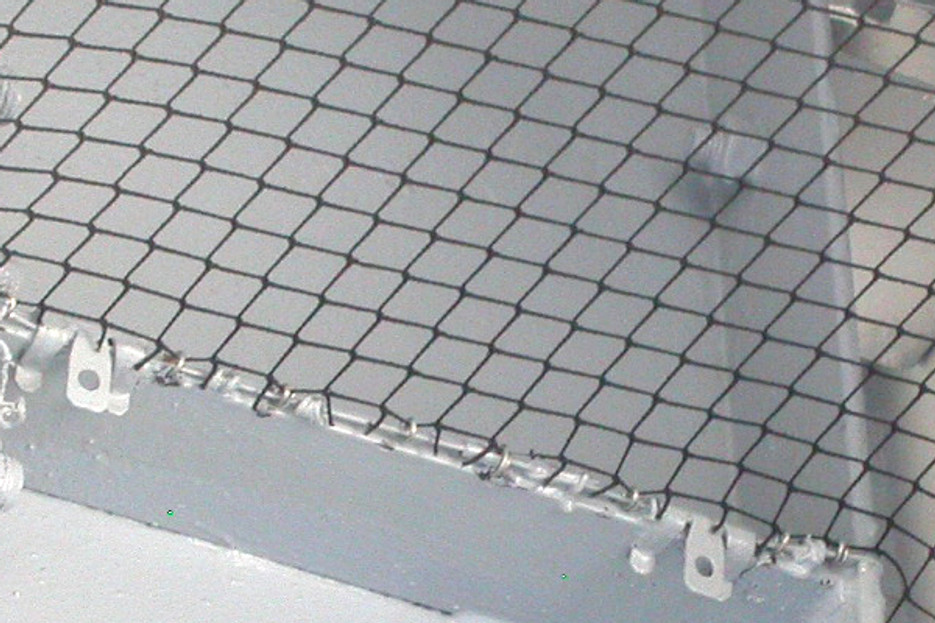How Pigeon Nets Can Protect Your Property from Feathered Invaders
How Pigeon Nets Can Protect Your Property from Feathered Invaders
Blog Article
Discover Effective Bird Control Solutions to Secure Your Residential Or Commercial Property
As building proprietors progressively face obstacles presented by bird invasions, finding effective control solutions comes to be vital to securing both structural integrity and wellness criteria. While typical approaches like bird netting and spikes use a degree of defense, they might not attend to the root creates of problem. Exploring the intricacies of bird actions and applying critical environment alterations can yield extra lasting outcomes.
Recognizing Bird Actions
Comprehending bird behavior is fundamental to implementing efficient bird control options. Birds, as complex animals, exhibit actions driven by survival impulses such as nesting, foraging, and mating. Acknowledging these patterns is important for designing strategies to handle their presence in human atmospheres. Each species has special characteristics; for circumstances, pigeons are known for their homing capability and choice for city settings, whereas gulls are typically attracted to seaside areas where food is abundant.
Migratory patterns also play a significant role in bird behavior. Additionally, birds often exhibit territorial actions, safeguarding selected nesting sites against perceived threats, which can lead to hostile communications with human beings.
Carrying out bird control services needs a recognition of these behavior nuances. By assessing the certain routines and preferences of the bird species concerned, home owners and supervisors can establish tailored approaches that line up with natural actions, minimizing the probability of these avian site visitors triggering damages or disruptions. This knowledge creates the foundation for successful, gentle bird management techniques.
Physical Deterrents
Physical deterrents provide a efficient and practical approach to bird control by literally obstructing birds from accessing certain locations. This method works as a long-lasting service in managing bird populaces, decreasing damage to home, and avoiding carcinogen associated with bird droppings. Different physical deterrents are available, each customized to address details bird-related difficulties while ensuring very little effect on the surrounding atmosphere.
One commonly made use of physical deterrent is bird netting, which produces an obstacle avoiding birds from nesting or roosting in unwanted areas. This lightweight yet sturdy material can be set up over structure facades, yards, and various other vulnerable locations. Additionally, bird spikes, one more popular service, prevent birds from perching on indications, steps, and roof coverings. These spikes are designed to be unobtrusive, maintaining the aesthetic appeal of the building while properly deterring birds.

Additionally, electrified tracks use an advanced deterrent by providing a mild, non-lethal shock to birds trying to arrive at protected surface areas. This method is specifically helpful for larger frameworks where various other deterrents may be much less effective. pigeon nets. By incorporating these physical deterrents, homeowner can significantly lower bird-related problems, safeguarding their properties and promoting a healthier setting
Visual and Sound Scare Techniques
Audio and visual scare strategies use a cutting-edge approach to bird control by leveraging sensory stimuli to discourage birds from frequenting unwanted areas. Visual deterrents may include reflective products, such as mirrors or holographic tape, that disorient and puzzle birds as they come close to.
Sound deterrents utilize sound to create a distressing environment for birds. Tools producing distress telephone calls or predator noises can successfully indicate risk to birds, motivating them to abandon the area. These sounds can be programmed to play at intervals to avoid birds from becoming accustomed to the noise, consequently keeping their efficacy in time.
Both audio and visual scare tactics are helpful because of their non-lethal nature and capacity to cover large areas. Nonetheless, their effectiveness may differ relying on the types of bird and the specific setting. Normal evaluation and adjustment of these techniques can improve their success in offering lasting bird control services.

Habitat Alteration
While scare methods can be efficient, habitat modification uses a much more lasting technique to bird control by changing the environment to make it much less attractive to birds. This technique entails evaluating the particular features of your residential property that might be unintentionally welcoming avian site visitors and then executing calculated adjustments. By resolving components such as food, water, and nesting sites, property proprietors can significantly decrease the allure of their premises to birds.
One trick facet of environment adjustment is removing food resources. This can be attained by safeguarding garbage can, without delay tidying up food debris, and getting rid of any bird feeders. In addition, guaranteeing that water resources, such as fountains or ponds, are either covered or modified can prevent birds from frequenting the location.
Modifying or removing prospective nesting websites is one more efficient measure. Trimming shrubs and trees can reduce the schedule of suitable nesting locations, while installing physical barriers like netting or spikes can avoid birds from roosting on ledges and light beams.
Expert Pest Control Services

Making use of a series of their website strategies, these services typically incorporate physical, chemical, and biological techniques to prevent birds successfully. Physical deterrents may consist of setting up webs, spikes, or cord systems to stop birds from roosting or nesting. In many cases, acoustic or aesthetic repellents may be used to create an inhospitable atmosphere for the birds. When essential, experts can use chemical deterrents or avicides, while ensuring compliance with neighborhood wildlife defense policies.
Furthermore, expert pest control services emphasize humane and ecologically accountable practices. They are equipped to deal with complicated situations that might be beyond the scope of DIY options, guaranteeing that bird control measures are implemented securely and successfully. By leveraging the expertise of qualified experts, home owners can attain long-term results, decreasing damage and maintaining the integrity of their premises.
Conclusion
Executing a calculated mix of bird control methods is vital for safeguarding buildings from avian-related damages and health and wellness dangers. Physical deterrents such as netting and spikes, paired with audio and aesthetic scare techniques, effectively reduce bird existence. Environment alteration by protecting food resources and handling plant life even more inhibits nesting. Engaging expert bug control services guarantees conformity with wild animals regulations and offers long-lasting, humane options. A thorough approach substantially minimizes bird task, safeguarding property stability and human health More Bonuses and wellness.
Comprehending bird actions is basic to executing reliable bird control services.Physical deterrents present a reliable and useful method to bird control by literally obstructing birds from accessing particular locations.One generally utilized physical deterrent is bird netting, which develops a barrier preventing birds from nesting or roosting in unwanted places.Audio and visual scare techniques supply an innovative approach to bird control by leveraging sensory stimulations to discourage birds from frequenting undesirable areas.While scare methods can be reliable, habitat adjustment offers a more sustainable strategy to bird control by modifying the atmosphere to make it less appealing to birds.
Report this page